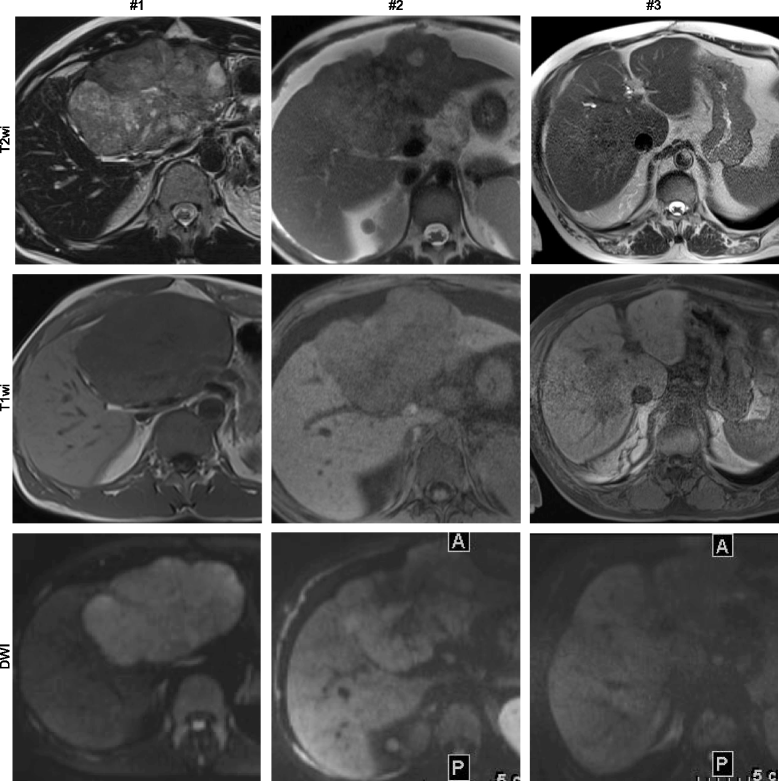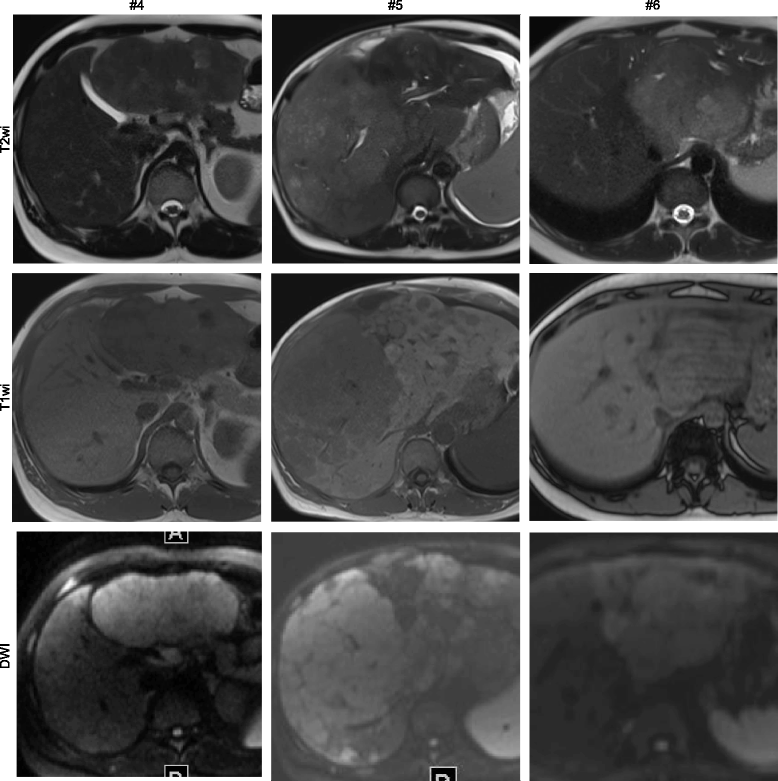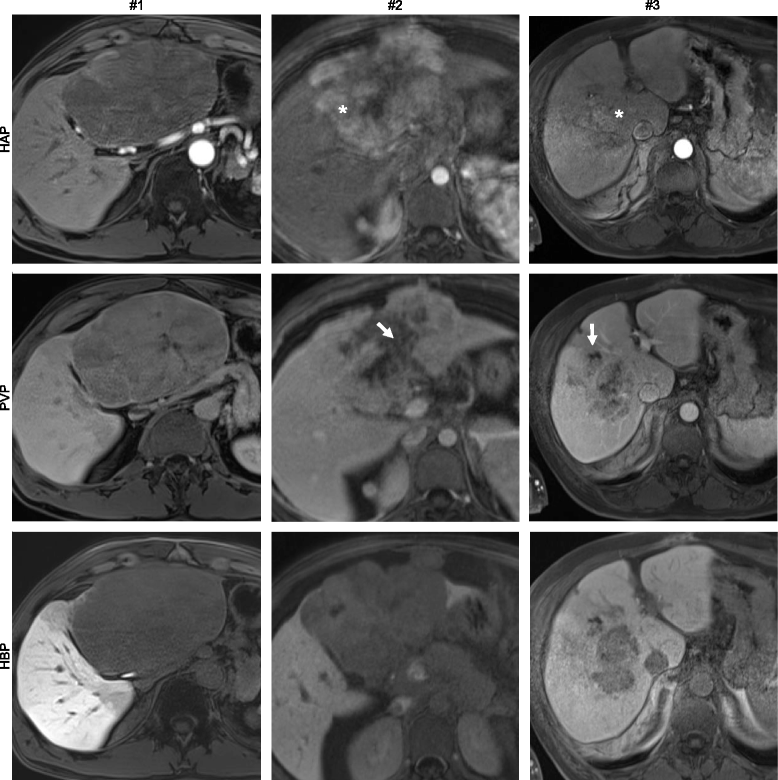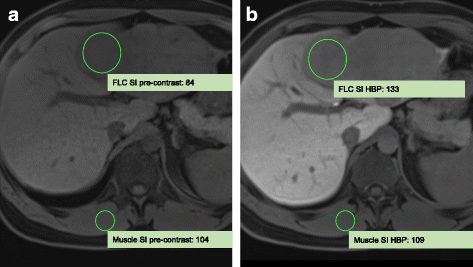Imaging features of fibrolamellar hepatocellular carcinoma in gadoxetic acid-enhanced MRI
- PMID: 29490696
- PMCID: PMC5831838
- DOI: 10.1186/s40644-018-0143-y
Imaging features of fibrolamellar hepatocellular carcinoma in gadoxetic acid-enhanced MRI
Abstract
Background: Fibrolamellar hepatocellular carcinoma (FLC) is a rare malignancy occurring in young patients without cirrhosis. Objectives of our study were to analyze contrast material uptake in hepatobiliary phase imaging (HBP) in gadoxetic acid-enhanced liver MRI in patients with FLC and to characterize imaging features in sequence techniques other than HBP.
Methods: In this retrospective study on histology-proven FLC, contrast material uptake in HBP was quantitatively assessed by calculating the corrected FLC enhancement index (CEI) using mean signal intensities of FLC and lumbar muscle on pre-contrast imaging and HBP, respectively. Moreover, enhancement patterns in dynamic contrast-enhanced MRI and relative signal intensities compared with background liver parenchyma were determined by two radiologists in consensus for HBP, diffusion-weighted imaging using high b-values (DWI), and T2 and T1 weighted pre-contrast imaging.
Results: In 6 of 13 patients with FLC gadoxetic acid-enhanced liver MRI was available. The CEI suggested presence of HBP contrast material uptake in all FLCs. A mean CEI of 1.35 indicated FLC signal increase of 35% in HBP compared with pre-contrast imaging. All FLCs were hypointense in HBP compared with background liver parenchyma. Three of 6 FLCs had arterial hyperenhancement and venous wash-out. In DWI and T2 weighted imaging, 5 of 6 FLCs were hyperintense. In T1 weighted imaging, 5 of 6 FLCs were hypointense.
Conclusion: Hepatobiliary uptake of gadoxetic acid was quantitatively measurable in all FLCs investigated in our study. The observation of hypointensity of FLCs in HBP compared with background liver parenchyma emphasizes the role of gadoxetic acid-enhanced liver MRI for non-invasive diagnosis of FLC and its importance in the diagnostic work-up of indeterminate liver lesions.
Keywords: Contrast media; Delayed diagnosis; Diagnostic imaging; Liver neoplasms; Magnetic resonance imaging.
Conflict of interest statement
Ethics approval and consent to participate
Ethical approval was obtained by the local institutional review board (Ethical Committee of the University of Heidelberg, S-043/2011).
Consent for publication
Not applicable
Competing interests
The authors declare that they have no competing interests.
Publisher’s Note
Springer Nature remains neutral with regard to jurisdictional claims in published maps and institutional affiliations.
Figures





References
MeSH terms
Substances
Supplementary concepts
LinkOut - more resources
Full Text Sources
Other Literature Sources
Medical
Miscellaneous

